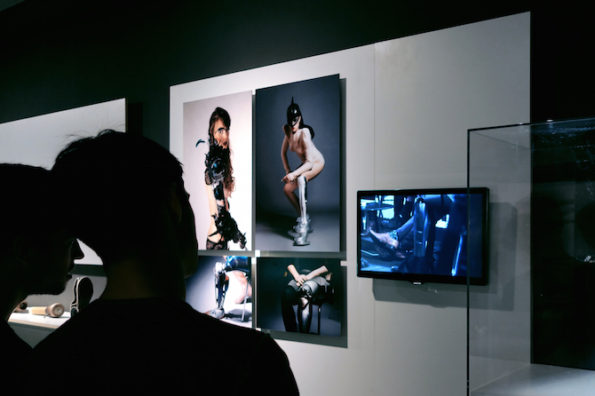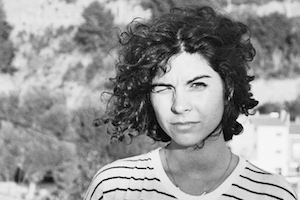Search
To search for an exact match, type the word or phrase you want in quotation marks.
A*DESK has been offering since 2002 contents about criticism and contemporary art. A*DESK has become consolidated thanks to all those who have believed in the project, all those who have followed us, debating, participating and collaborating. Many people have collaborated with A*DESK, and continue to do so. Their efforts, knowledge and belief in the project are what make it grow internationally. At A*DESK we have also generated work for over one hundred professionals in culture, from small collaborations with reviews and classes, to more prolonged and intense collaborations.
At A*DESK we believe in the need for free and universal access to culture and knowledge. We want to carry on being independent, remaining open to more ideas and opinions. If you believe in A*DESK, we need your backing to be able to continue. You can now participate in the project by supporting it. You can choose how much you want to contribute to the project.
You can decide how much you want to bring to the project.

“To think of the body is to think of the world”.
David Le Breton
As little more than a neonate we begin to explore the body we inhabit, sensing that our organism is not physically tied to the breast that nurses us; that we are a distinct entity, an independent and autonomous body. Nevertheless, this glimmer of an identity that grows more accentuated over time is inscribed within a specific space-time, indebted to its socio-cultural past. Although it could be perceived that it pertains to nature and the world understood as a context, both spaces, inside and outside, are intimately interrelated.
How can other bodies be formed and what type of bodies these could be. What new relations, with others and their surroundings, are generated by the incorporation of technology and science (in all its ramifications: computer science, biotechnology, robotic)? This is the window on to multiple futures the CCCB presents in the exhibition +Humanos.
There exists an established, learnt, and interiorised social structure, a governing body that exercises power over everything from self-control to the control of populations (Foucault, theory of governability). But it is so integrated that it ends up being for many almost innate, like the perennial binomial of man-woman understood as gender and sex. The awareness of multiplicity and self-identification always comes from minorities that unite together, such as the queer, feminist, and transsexual theories. However, this opening up of possibilities that breaks with the canons and influences the social fabric, as Judith Butler rightly indicates in “Bodies that matter” has a broader radius of action, mobilizing precarious populations or those who don’t fit into what is presented as the perfect norm [[It is possible to see in the exhibition the following works referred to in the text as well as over 50 other pieces of art, science, and technology:
1. La ley del promedio – Addie Wagenknecht, 2014.
2. Ningún cuerpo es perfecto – Niko von Glasow, 2008.
3. Recorte por la línea – Regina José Galindo, 2005.
4. Piernas de guepardo – Aimee Mullins, 1996.
5. Prótesis. The Alternative Limb Project – Sophie de Oliveira Barata, 2011-2015
6. Ciborgismo – Cyborg Foundation, Neil Harbisson y Moon Ribas, 2015.
7. Transfiguraciones – Agatha Haines, 2013.
8. Dispositivo de empatía improvisado I.E.D – S.W.A.M.P – 2005. ]].
On numerous occasions, the unreal ideals of beauty propagated by the media have an impact on individuals leading to a rejection of their bodies, perceived as the “imperfect human” (2). A dissatisfaction with their skin colour, weight, form, or size, the lack of an arm or an extra finger. If while plastic surgery has offered us on the one hand, the possibility of transformation and with it relief, a recuperation of self-esteem, on the other, this same proffered hand can also result oppressive, in some cases ending up pathological. Could there be products for our identity that are no longer just designed so much as modified, offering the possibility of becoming other?(3).
At present the cyborgs, as baptised by Donna Haraway, are gaining in importance; disability as augmented ability. For Aimee Mullins (4) her organic body ends at the knees, where the machine begins; her artificial limbs inspired in the legs of a cheetah were what she became known for in the Olympic games. She flaunted artificial limbs made from glass in the video artwork The Cremaster, by Matthew Barney. She has been a model for Alexander McQueen, spoken at TED Talks, and her presence demonstrates not just that it is possible to enjoy life in equal conditions so much as it is also entirely normal. Viktoria Modesta lost her leg as a child and the only physical difference between her and other singers was that she could exchange her leg for different prosthetic designs. Still musical producers closed many doors on her before she leapt to fame as a pop singer. It’s not so much a case of vindicating artificial limbs but it’s true that the fact that companies like The Alternative Limb Project (5) are dedicated to designing and creating artificial limbs in both an aesthetic and functional sense beyond the mere simulacrum of articulation, is redefining the concept of amputation and how to relate to it. The artificial limb is no longer a part of the body to be hidden. It can be an augmented ability, displayed with pride.
We are familiar with the body we have and some of those around us. Now, moreover, thanks to the potential of biotechnologies we can dream of other bodies. It seems we are ever closer to knowing if androids dream of electric sheep. Neil Harbisson and Moon Ribas have founded The Cyborg Foundation (6) with the intention of helping humans to become cyborgs beyond mere medical usage, promoting cyborgism as a social and artistic movement. The “power” Moon Ribas, for example, wanted to have and now has implanted, was a sensor to perceive earthquake tremors. A dancer by profession she incorporates these unexpected trepidations into her choreographies.
What if these skills and other abilities could already be modified when the baby is just out of the womb? (7) Let’s imagine a world in which families allow their children to be modified so they are better prepared for the adversities they might face in the future. A possibility, that places in doubt the limits of what is ethical but one that could become a plausible reality. As a luxury that only the upper classes could allow themselves, we would consequently be faced with a governing class of super-humans with superpowers, most probably augmenting, as a result, an inequality of opportunities. The exclusivity might only perhaps be fleeting as happens with any new invention, as occurred with the television or mobile phones.
Of course, if we understand the context as a prolongation of the body itself, the effects of the world’s misfortunes will have on us will be amplified, according to our proximity to the place where they occur. Feeling for example that the body that suffers could be yours (8). It’s sad that bodies suffering at a greater distance are so far away they don’t affect us. And as such it seems that empathy merely skirts the misfortunes of countries that are far away from us, classes to which we don’t belong, or religions and genders that are not our own. According to Seigworth and Gregg in their book The Affect Theory Reader the impact on a body is as great inside as outside, until ultimately such clear distinctions lose their importance.

Nerea Arrojería is an art historian specialized in photography. Among her lines of interest is the still or moving image used in contemporary societies, inside or outside the museum.
"A desk is a dangerous place from which to watch the world" (John Le Carré)